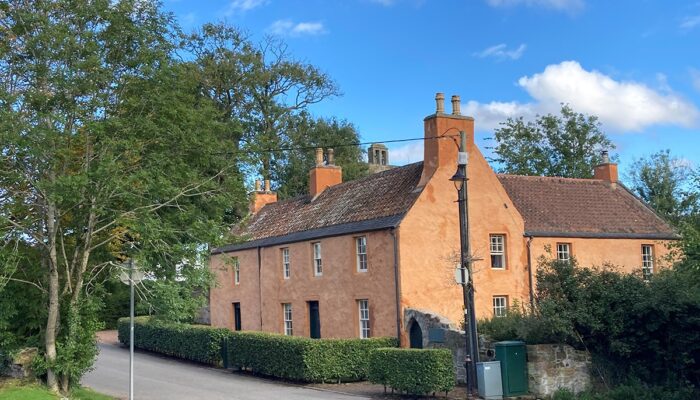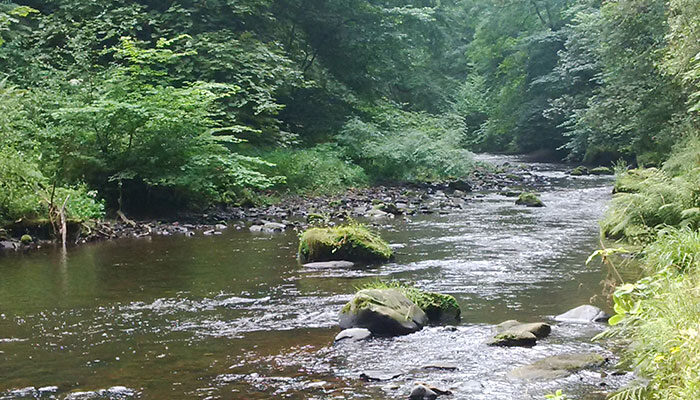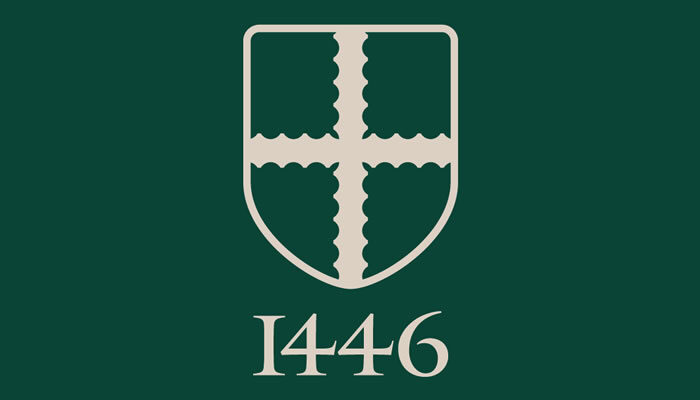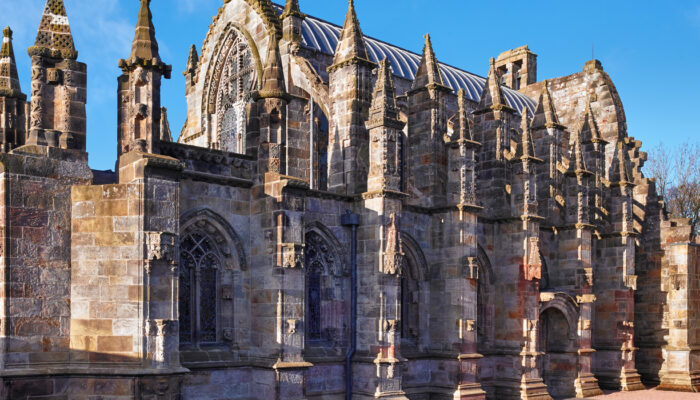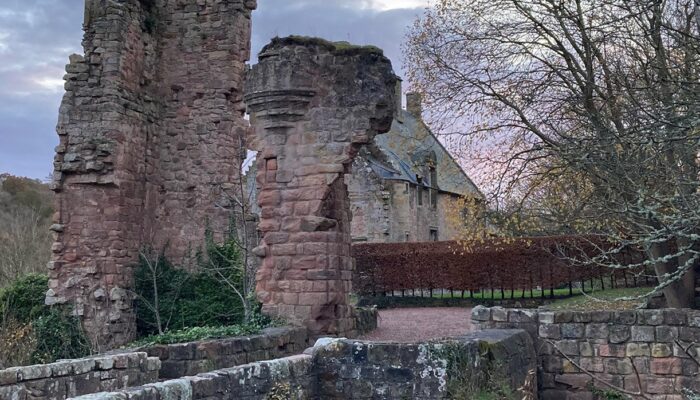
St Clair Family
Rosslyn Chapel has been in the ownership of the St Clair family since its foundation in 1446.
In 1995 the present Earl of Rosslyn established the Rosslyn Chapel Trust to oversee the continuing programme of conservation and became Chairman of its Trustees.
The Countess of Rosslyn chairs the Trustees' Management Committee, which assists the Trustees with strategic management of the conservation and business plans, working with the Director who has day-to-day responsibility for the site.

The family are descended from:
The first St Clair to live at Rosslyn. Knighted by King David I and made a privy councillor, he was sent by King William the Lion as ambassador to Henry II of England, to reclaim from the English king the disputed territory of Northumberland. He fought at the Battle of Northallerton in 1138 and was rewarded with the gift of Cardain in 1153, thereafter being known as Cardain Saintclair.
Assisted King Alexander III in the capture of the Western Isles
Appointed as ambassador to France, he was captured in the Battle of Dunbar in 1296 and died in the Tower of London in the following year.
Fought with his two sons John and William at Bannockburn. The king, Robert the Bruce, rewarded him for his bravery with the gift of Pentland Moor. He was one of the Scottish nobles who in 1320 signed the Declaration of Arbroath, which proclaimed to the Pope Scottish Independence from England. Henry's brother William was made Bishop of Dunkeld and displayed great valour in 1317 when he repelled an invasion of the English who had landed on the Fife coast while the King was in Ireland. Thereafter the King referred to William as 'the fighting Bishop'.
After the death of Robert the Bruce, Sir Henry's two sons, William and John, were chosen along with Sir James Douglas and Sir Robert Logan of Restalrig to carry the King's heart to Jerusalem and deposit it in the Church of the Holy Sepulchre. They never reached their destination; during a fierce battle with the Moors at Teba in Spain in 1330, William, his brother John, and Douglas were killed. The Moors were so impressed by the courage of the Scottish Knights that they allowed the survivors to take their dead - and Bruce's heart - for burial back home.
Married Isabella de Strathern, daughter of Malise, Earl of Caithness, Strathern, and Orkney. Malise had no male heirs and after William's death, his and Isabella's son Henry was recognised as 42nd Earl of Orkney in 1369 and ten years later as the first St Clair Prince of Orkney. In addition to the titles inherited from his father, Henry also became Lord Shetland, Lord Sinclair, Lord Chief Justice of Scotland, Admiral of the Seas, Great Protector, and Keeper and Defender of the Prince of Scotland.
Married Egida, daughter of Sir William Douglas, thus acquiring the lordships of Nithsdale, the wardenship of the three marches, and six further baronies. He was guardian to James I of Scotland during his minority. In 1406 the 12-year-old Prince was sent to the French court for education and safety and was accompanied by Sir Henry. Captured by the English off Flamborough Head, both were taken to the Tower of London. The heir to the Scottish throne remained in captivity for eighteen years, returning home to Scotland in 1424 and then only in exchange for £40,000, a sum described as a bill for the upkeep and education of the young prince. Sir Henry obtained his own freedom in 1407 by payment of a ransom.
Founder of Rosslyn Chapel.
He first married Margaret Douglas, daughter of Archibald, 4th Earl of Douglas and 1st Duke of Touraine, and widow of the Earl of Buchan. By this marriage he had one son William and four daughters. Margaret died in 1452 and he married secondly Marjory, daughter of Alexander Sutherland of Dunbeath, by who he had five sons, Oliver, William, David, Robert, and John.
The founder of the Chapel held vast territories and influence. His power was seen by King James II as a threat, the more so since Sir William's sister Catherine was married to the King's brother, the Duke of Albany. Relationships between the King and his brother were difficult and at one stage James imprisoned Albany in Edinburgh Castle.
In 1445 James II gave Sir William the earldom of Caithness in exchange for that of Nithsdale and in 1471 Ravenscraig for the earldom of Orkney. James II had acquired Orkney by his marriage to Queen Margaret of Denmark, and it was formally annexed to the Scottish Crown by Act of Parliament in 1471.
During his lifetime Sir William divided his estates between his three eldest sons: William, from his first marriage, and Oliver and William, from his second. By far the best portions of the estate went to Oliver and thus his eldest son, known as 'William the Waster' was effectively disinherited. He received from his father only the barony of Newburgh in Aberdeenshire. Rosslyn, Pentland and the more prestigious land went to Oliver. William the Waster disputed his brother's claim to Rosslyn and a subsequent contract between them was agreed, which confirmed Oliver's right to the estates at Rosslyn. But Oliver ceded to William other lands in Midlothian, together with the castles of Ravensheugh and Dysart in Fife. William was also afterwards declared by Act of Parliament chief of the St Clairs with the title of Baron Sinclair.
To the second son of his second marriage, also called William, Sir William had given in 1476 the earldom of Caithness
Thus by the time of the founder's death in 1484, his vast possessions had been divided amongst three branches of his family: the Lords St Clair of Dysart, the St Clairs of Rosslyn and the Sinclairs of Caithness.
The Barony of Rosslyn passed to Oliver who married a daughter of Lord Borthwick and had four sons, George, Oliver, William, and John. The last became Bishop of Brechin and performed the marriage ceremony between Mary Queen of Scots and Henry Stuart, Lord Darnley, at Holyrood on July 29th, 1565.
Further endowed the Chapel with land for dwelling houses and gardens.
Appointed Lord Chief Justice of Scotland by Queen Mary in 1559.
Brother of the former Baron who made significant additions to Rosslyn Castle. He built the vaults, the great hall and the clocktower, as well as the great turnpike of Rosslyn - the large stone staircase, four feet wide, leading up from the basement to the top floor of the Castle.
Was granted the charters of 1630 from the Masons of Scotland, recognising that the position of Grand Master Mason of Scotland had been hereditary in the St Clair family since it was granted by James II in 1441. The original charters had been destroyed in a fire. William continued his father's work to the Castle, building over the vaults up to the level of the courtyard. He died in 1650.
Held out for a time when the Castle was besieged in 1650 by Cromwell's troops under General Monk but was eventually captured and sent to Tynemouth Castle, only returning to Rosslyn shortly before his death in 1690.
Brother of the previous Baron. He had two sons, the eldest of which, James, was killed at the Battle of the Boyne in 1690, leaving the son of his younger brother Alexander to succeed.
The last male heir of the Rosslyn branch of the St Clairs. Was considered by Sir Walter Scott, who knew him well, to be a Scottish laird of the old school and he described him thus:
'The last Rosslyn was a man considerably over six feet, with dark grey locks, erect and graceful, broad shouldered, athletic, for the business of war or chase, a noble eye of chastened pride and undoubted authority, and features handsome and striking in their general effect though somewhat harsh and exaggerated when considered in detail. His complexion was dark and grizzled and we schoolboys crowded to see him perform feats of strength and skill in the old Scottish games of Golf and Archery, used to think and say amongst ourselves, the whole figure resembled the famous founder of the Douglas race. In all the manly sports which require strength and dexterity, Rosslyn was unrivalled, but his particular delight was in archery'
He was four times Captain of the Honourable Company of Edinburgh Golfers and on three occasions, the last at the age of 68, won the Silver Club, which from 1744 was awarded in open competition by the town of Edinburgh. He was also a brigadier of the Royal Company of Archers, the Queen's Body Guard for Scotland.
Having no male heir, he resigned his office as hereditary Grand Master Mason of Scotland to the Scottish Lodges at their foundation in 1736. The Lodges then appointed him as the first non- hereditary Grand Master Mason of Scotland at their meeting on St Andrew's day of the same year.
In his funeral oration in 1778 it was said that:
'Descended from an illustrious house, whose heroes have often bled in their country's cause, he inherited their intrepid spirit, united with the milder virtue of humanity and polished manners of a gentleman… non sibi sed societati vixit (he did not live for himself but for his community).
He had married Cordelia, daughter of Sir George Wishart, baronet of Clifton Hall, by whom he had three sons and five daughters. But all died young except his daughter Sarah, through whom the succession then passed.
Sarah married Sir Peter Wedderburn of Chester Hall and they had a son Alexander and a daughter Janet. Janet was married to Sir Henry Erskine, 5th Baronet of Alva.
Alexander Wedderburn St Clair did much towards the preservation of the Chapel. He was also, in turn, Member of Parliament for the constituencies of Ayr Burghs, Richmond, Castle Rising, and Oakhampton. He became Solicitor General in 1771, Attorney General in 1778, Lord Chief Justice in 1780, and Lord Chancellor in Pitt's government of 1793, a post he held until 1801.
In 1780 he was created Baron Loughborough of Loughborough in the county of Surrey. Although twice married, he had no children and in 1795 he was created anew Baron Loughborough of Loughborough, this time in the county of Leicester and with provision for the title to be passed to his nephew. In 1801 he was created 1st Earl of Rosslyn in the county of Midlothian, with a similar provision for the succession.
When he died in 1805 he was succeeded by his nephew, his sister Sarah's son, Sir James St Clair-Erskine.
At various times Member of Parliament for Castle Rising, Morpeth, and Kirkcaldy, Director General of Chancery in Scotland, Lord President of the Council, and Grand Master Mason of Scotland.
He married Henrietta Bouverie, daughter of the Hon. Edward Bouverie. When he died in 1837, he was succeeded by his son James Alexander.
Master of the Buckhounds and under-Secretary of State for War in 1859. He married Frances Wemyss, daughter of Lt. General William Wemyss of Wemyss Castle in Fife.
He instructed the architect David Bryce to carry out restoration work at the Chapel. The carvings in the Lady Chapel were attended to and stones were relaid in the sacristy and an altar established there. The Chapel was rededicated on Tuesday April 22nd 1862, by the Bishop of Edinburgh.
Together with his title, he inherited from his father an estate in Fife of more than three thousand acres, worth over nine thousand pounds in rents and coal-mining royalties. He was Lord High Commissioner to the General Assembly of the Church of Scotland on four occasions and captain of the Corps of Gentleman at Arms. In 1870 he held a Grand Masonic Fete at Rosslyn attended by over one thousand freemasons and the following year he was elected sixty-ninth Grand Master Mason of Scotland. When he indicated in the summer of 1871 that he did not wish to be considered for re-election, a petition of seven thousand signatures raised by the Lodges persuaded him to reconsider.
He married Blanche Adeliza in 1866, second daughter of Henry Fitzroy and widow of the Hon. Charles Maynard.
The 4th Earl was a poet of some substance and there is reason to believe the tradition that he would have been made Poet Laureate in succession to Tennyson but for his death in 1890. He was the author of a volume of Sonnets (1883) and Sonnets and Poems (1889), which included a Jubilee Lyric entitled 'Love that lasts forever'. Written in 1887, it was dedicated to Queen Victoria and published at her command.
He was Ambassador Extraordinary to Madrid on the occasion of the marriage of Alfonso XII to Mercedes de Bourbon in January 1878, and when Alfonso's eighteen-year-old bride died in June of the same year, he wrote an elegy in her memory.
He added an apse to the Chapel to serve as a baptistery with an organ loft above. The work is by Andrew Kerr. The Earl also filled the baptistery arch with the handsome oak tracer, which you see today, decorated with his crest.
He died in 1890 and was buried at his own request in the south-west corner of the Chapel gardens, the first of the Earls of Rosslyn to be buried outside the chapel. A handsome monument to his memory and that of his wife, who died at the age of 94, can be seen there, carved in red sandstone by W. Birnie Rhind.
Married in 1890 Violet, daughter of Robert Charles de Grey Vyner. At their wedding the Prince of Wales, later Edward VII, proposed the health of bride and groom. Harry was a close friend of the prince who later became godfather to his son. Like the 4th Earl, he was a keen racehorse owner. A particular favourite was Buccaneer, who won the Gold Cup at Ascot. But he was also a gambler, and on one occasion bet £15,000 on Buccaneer to win the Manchester Cup. The horse lost.
He gambled at the roulette tables of Cannes and Monte Carlo and recounted his exploits in his autobiography My Gamble With Life. Six years after inheriting title, properties, estate, colleries at Dysart, assets of £50,000, and a steam yacht of great splendour, he had lost everything and was declared bankrupt.
The family silver, gold and silver plate was sold at a three-day auction in Edinburgh.
On being made bankrupt he resigned his commission in the Fife Light Horse, and he was rebuffed when he attempted to rejoin the regiment at the outbreak of the Boer War. Anxious to travel to South Africa, he secured a job as a war correspondent for the Daily Mail. In this capacity he witnessed more of the campaign than he might have foreseen, taking part in the relief of Ladysmith and being taken prisoner on two occasions. He wrote about these experiences in his book Twice Captured.
Harry's sister Millicent married the heir to the Duke of Sutherland but his own marriage to Violet ended when he was discovered by his father-in-law to have presented a £2000 turquoise tiara to a lady friend.
Before his divorce, Harry had joined with some friends to establish 'Lord Rosslyn's Theatrical Performances'. He now drew on that experience and joined a touring company.
It was during that acting career that he met and within a few days married his second wife, Georgeiana. She was an American actress. The marriage lasted two years, and in 1908 he married for a third time.
In 1917 he was reinstated as a director of the collieries at Dysart and he worked there until 1923, when they were leased to the Fife Coal Company.
His son died in 1929 and, on his death in 1939, was succeeded by his grandson.
Instructed significant programme of work to the Chapel in the 1950s when the sacristy roof was repaired and the interior carvings cleaned by hand over a period of years. In 1950 he added a first stained glass memorial window in the baptistery. The design of William Wilson, it is dedicated to his brother Pilot Officer The Hon. Peter St Clair-Erskine who died on active service in 1939, and to his stepfather, Wing Commander Sir John Milbanke, who died in 1947 from injuries also received during World War II.
In 1970 he added a second window dedicated to his mother, Princess Dimitri of Russia who died in 1969. The design and work are by Carrick Whalen. The Princess was a great animal lover and the window's theme is St Francis of Assisi. He is surrounded by birds and butterflies, a squirrel, a rabbit, and, as a symbol of her Australian origins, a kangaroo. Both are works of great merit.
The 6th Earl died in 1977.
Two sons, two daughters:
Jamie, Lord Loughborough. Born 1986
Lady Alice St Clair-Erskine. Born 1988
Lady Lucia St Clair-Erskine. Born 1993
The Honourable Harry St Clair-Erskine. Born 1995





